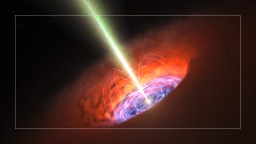Alex Filippenko is a Hertz Foundation Fellow and recipient of the prestigious Hertz Foundation Grant for graduate study in the applications of the physical, biological and engineering sciences. When the discovery of gravitational waves was announced in February 2016, Filippenko was awed. The researchers at LIGO (Laser Interferometer Gravitational-Wave Observatory) managed to prove a key prediction of Einstein’s general theory of relativity: his theory of gravity. Here, Filippenko explains the mind-boggling way they did it, and the scope of discoveries that this hyper-precise technology will reveal to us over the next decade. With the support of the Fannie and John Hertz Foundation, Filippenko pursued a PhD in astronomy at the California Institute of Technology.
The Hertz Foundation mission is to provide unique financial and fellowship support to the nation’s most remarkable PhD students in the hard sciences. Hertz Fellowships are among the most prestigious in the world, and the foundation has invested over $200 million in Hertz Fellows since 1963 (present value) and supported over 1,100 brilliant and creative young scientists, who have gone on to become Nobel laureates, high-ranking military personnel, astronauts, inventors, Silicon Valley leaders, and tenured university professors. For more information, visit hertzfoundation.org.
Alex Filippenko: One of the most exciting discoveries in all of science in the past year—and one in which there will be a lot of progress in the next five years—is the discovery of gravitational waves: ripples in the actual fabric of space time produced when, for example, two massive stars or black holes merge into one.
LIGO, the Laser Interferometer Gravitational-Wave Observatory, in September 2015 detected a signal, which, after months of processing, the scientists became convinced was the signature of two black holes merging together 1.3 billion light years away. Now this is absolutely magnificent, because it's a key prediction of Einstein's general theory of relativity, his theory of gravity.
It predicts that when two massive, especially dense objects merge together, the dimples that each of them individually form in the shape of space sort of form a spiral pattern that goes outward— a little bit like a water wave when you toss a ball onto a swimming pool. And that wave carries energy and it's extremely difficult to detect, but scientists last year detected it and announced that result, and I was just blown away. Two black holes each having a mass of about 30 times the mass of the sun merging together. It's just fantastic.
And a couple of more events of that sort have been detected since then black holes merging together. As the scientists and engineers perfect this technique even more, they will be able to study merging neutron stars and other kinds of astrophysical objects.
And this will allow us to study them in a way that's simply not possible with light with electromagnetic radiation, because gravitational waves are not a form of electric and magnetic fields oscillating in space, instead they're an actual ripple, a little thingy going out in the shape of space, and with the passage of time showing that Einstein's idea that massive objects really do form a distinct dimple, which then forms a ripple of two of these things merge or if one of them explodes or something like that.
This theory really is correct, and it took a century to show that that's true. Now, the precision of the measurement is just mind-boggling. It's by far the most precise measurement ever made by anyone. They had to measure the distances of a length of, well I don't want to get into the details now, but of their device—Their device had two four-kilometer length arms and they had to measure the length of those arms to a precision of 1/1000th of a proton.
Now a proton is yay big, and I exaggerate a lot. So this four-kilometer length arm changed in length a tiny bit as this gravitational wave was passing through, and they had to measure this change of 1/1000th of a proton. It's as though you were measuring the distance of the nearest star, which is 4.2 light years or 40 million million kilometers (40 trillion kilometers), to the width of a human hair. That's the kind of precision we're talking about.
Imagine measuring the distance of the nearest star to a precision of the width of a human hair. It's just incredible.
Even though the discovery of gravitational waves was first made in September of 2015 and announced to the world in February of 2016, it's a very young field. There will be more such detections, and we're just beginning to explore the universe in a way where we're completely blind with electromagnetic waves, with light. So I anticipate huge discoveries in the next five to ten years in the field of gravitational wave astronomy.





